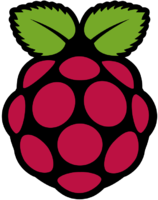Raspberry Pi
| Platforms | |
|---|---|
| | |
| | |
| | |
| | |
| | |
Installation
imagej package available from your package manager. Please be aware that this provides ImageJ 1.x only, packaged by a third party, without cooperation from the core ImageJ development team. You will not have access to any ImageJ2-specific features such as parameterized scripts, and you will likely have permissions errors because it is a system-wide ImageJ installation.The following steps describe how to install ImageJ on a Raspberry Pi:
- Open the terminal.
- Install Java 8 on your Pi (
sudo apt-get install openjdk-8-jre). - Choose Java 8 (
sudo update-alternatives --config java). - Verify it works using
java -version. - Download and install the platform-independent "no JRE" distribution of Fiji.
- Download the ImageJ.sh shell script
- Move the ImageJ.sh file to the Fiji.app folder
- Set the executable bit (
chmod +x ImageJ.sh) - Run it (
./ImageJ.sh) to launch ImageJ.
You may also need to disable (comment out) assistive_technologies=org.GNOME.Accessibility.AtkWrapper
in /etc/java-8-openjdk/accessibility.properties.
Note that the shell script supports only a subset of the functionality of the native ImageJ Launcher, but it should be able to run ImageJ successfully.
The following steps describe how to create a desktop icon to launch Fiji on a Raspberry Pi:
- Download the Fiji icon image: Fiji icon link
- Press ^ Ctrl+⎇ Alt+t to open the terminal window
- Type
nano Fiji.desktopand press return. This will load Nano which will allow you to create a desktop icon. - Type the following code, replacing
/path/towith the paths to theImageJ.shfile and the Fiji icon:
[Desktop Entry] Name=Fiji Version=1.0 Comment=Launches Fiji Exec=/path/to/ImageJ.sh Icon=/path/to/48px-Fiji-icon.png Terminal=false Type=Application Categories=Education
- Press ^ Ctrl+x and then press Y to exit and save the new desktop icon.
- Enter your desired file name, such as
Fiji.desktopand press return. Once complete, an icon should be visible on the desktop. - Press ^ Ctrl+x to return to the terminal window
- In the terminal window, type the following to navigate to the Desktop
cd ~/Desktop - Then type the following to make the new icon executable
chmod +x Fiji.desktop
3D Visualization
It is supposedly possible to run Java 3D on the Pi; see this StackOverflow thread. However, there have been no official reported successes on ImageJ community channels yet. If you get it working, please edit this section to describe the steps you used!
Even better, if you get ClearVolume and/or SciView working on the Pi, please update this page, and announce it on the Image.sc Forum!
Troubleshooting
See the Troubleshooting page.
Frequently Asked Questions
See the Frequently Asked Questions page.
See also
- Topics tagged raspberry-pi on the Image.sc Forum.
- The Linux page, for general information about ImageJ on Linux systems.

